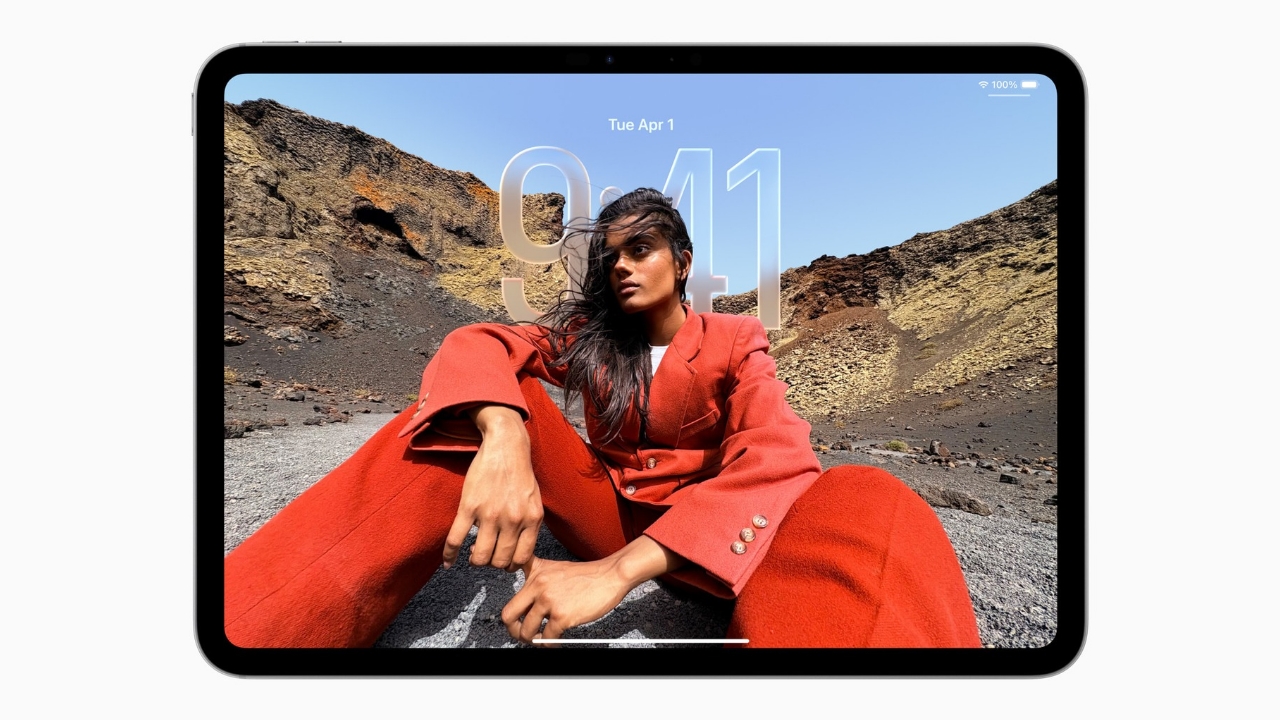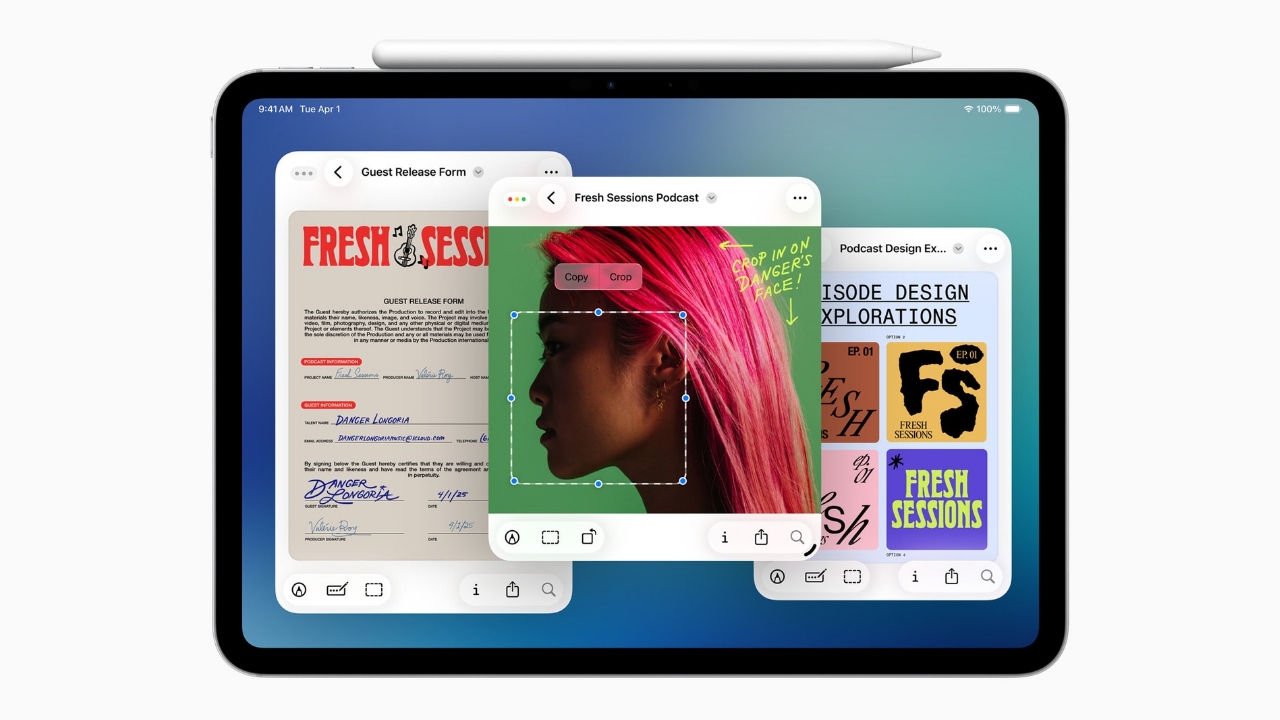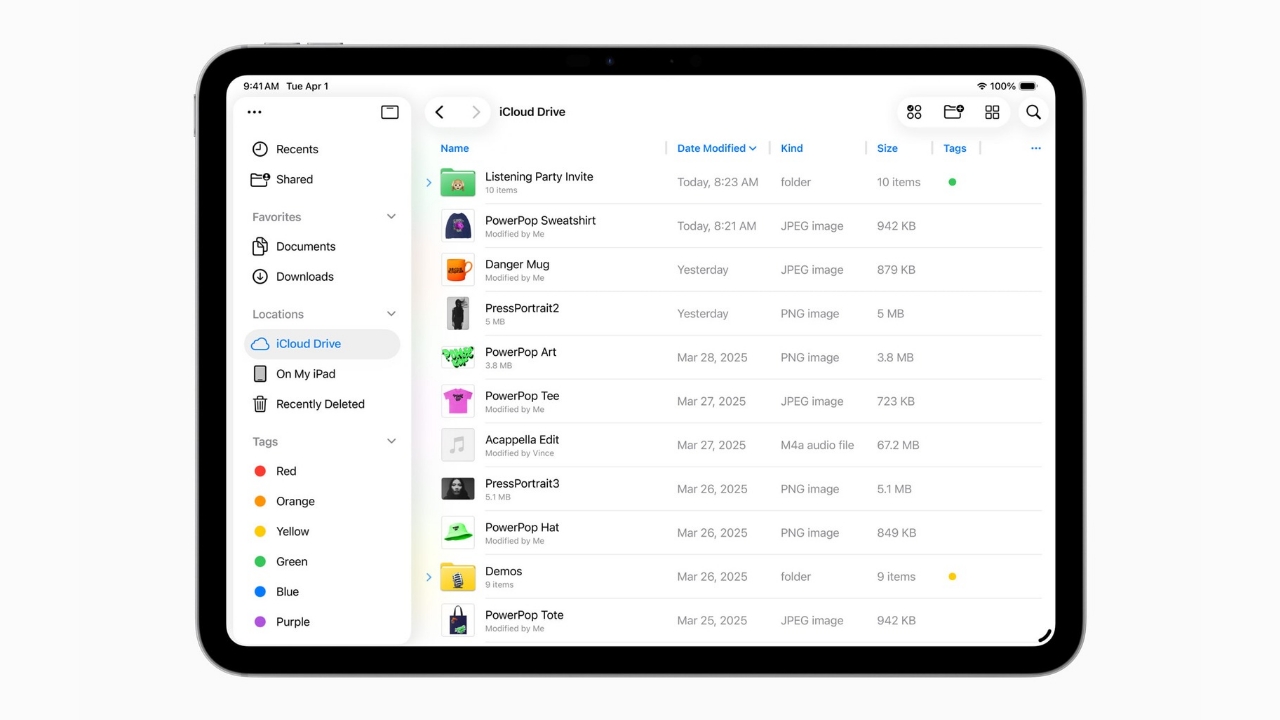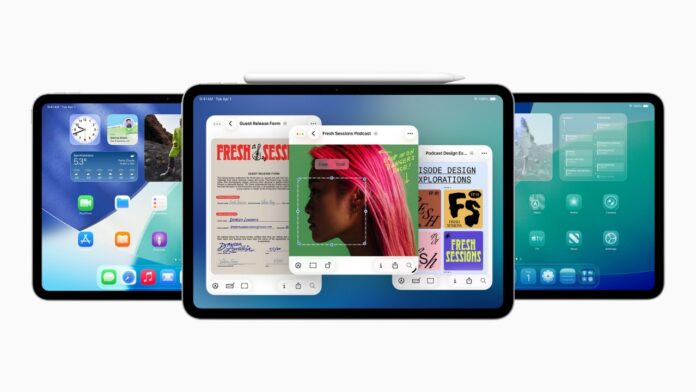Alongside iOS 26, Apple has introduced new software versions for its devices apart from the iPhone, including iPadOS 26, macOS Tahoe 26, watchOS 26, tvOS 26, and visionOS 26. The new software versions incorporate Apple’s new design language dubbed Liquid Glass. Here’s everything to know about the new versionr iPads.
iPadOS 26: All Details
Similar to iOS 26, the iPadOS 26 is made with Liquid Glass — a translucent new material that reflects and refracts its surroundings, while reacting to user input and dynamically transforming to bring greater focus to the content they care about most. It enables a new level of vitality across experiences like the Lock Screen and Control Center, and gives users new ways to personalise their Home Screen with updated App icons that come to life in light or dark appearances, colourful new light and dark tints, as well as an elegant new clear look. And updated controls and navigation extend to apps including Mail, Safari, Apple TV, Apple Music, and more.

Wiith iPadOS 26, Apple has added a new windowing system for the iPads. The new windowing system lets users fluidly resize app windows, place them exactly where they want, and open even more windows at once. This functionality works similar to macOS. Familiar window controls allow users to seamlessly close, minimise, resize, or tile their windows. Window tiling is designed for the unique capabilities of iPad, and enables users to arrange their windows with a simple flick. If a user previously resized an app, it opens back in the exact same size and position when they open it again.
With Exposé, users can quickly see all their open windows spread out, helping them easily switch to the one they need. The new windowing system works great with Stage Manager for those who want to group their windows into distinct stages, and with an external display for those who want even more space to work across their apps.

With a new menu bar, users can access the commands available in an app with a simple swipe down from the top of the display, or by moving their cursor to the top. Users can quickly find a specific feature or related tips in an app by using search in the menu bar. Additionally, developers can now customise the menu bar in their own apps.
Apple Intelligence in iPadOS 26 is now more powerful and deeply integrated, enhancing privacy while adding new features. Live Translation works in Phone, FaceTime, and Messages, automatically translating texts and calls in real time, including live captions during video calls.
Users can now create Genmoji by tweaking existing Emoji or customizing personal attributes like hair and accessories. In Image Playground, they gain more control over styles and can use ChatGPT to generate images, including unique Contact Posters or visuals based on custom prompts.
Shortcuts also get smarter, with new actions like text summarization and image creation using Apple Intelligence. Users can build advanced shortcuts — for instance, a student can compare class lecture transcriptions with their notes to identify missed points.

Then there’s an enhanced Files app for iPads. It features an updated List view that allows users to see more of their document details in resizable columns and collapsible folders. To make folders easier to identify at a glance, Files also offers folder customization options that include custom colors, icons, and emoji that sync across devices. For quicker access, users can now drag any folder from the Files app right into the Dock. Additionally, users can set a default app for opening specific files or file types.
A new Preview comes to iPad, giving users a dedicated app for creating a quick sketch, as well as viewing, editing, and marking up PDFs and images with Apple Pencil or by touch. Users can access all of their PDFs and images in the Files app right from Preview, create an empty page, use Apple Pencil to draw and write on it, and use AutoFill to quickly fill out PDF forms.
Next, Apple says that iPadOS 26 unlocks the ability to perform computationally intensive Background Tasks. When users start a long-running process in an app, Background Tasks will show up with Live Activities, giving users complete control and a clear sense of what is running. And developers can use an updated Background Tasks API that allows users to perform long-running tasks from their apps, too.
iPadOS 26 also brings new audio features that offer more flexible input and streamlined recording. Users now have better control over their audio input, with the ability to choose different microphones for each app, as well as individual websites. Recorded audio will be made even better with the availability of Voice Isolation, which blocks ambient noise, and allows clear and crisp recordings. And with AirPods 4, AirPods 4 with Active Noise Cancellation (ANC), and AirPods Pro 2, studio-quality audio recording allows users to record their content with great sound quality and enjoy clear calls.
With Local capture, users can produce high-quality recordings right from iPad with any video conferencing app, and easily share audio and video files once the call is over. Echo cancellation of other participants’ audio keeps the user’s voice front and centre, allowing for a clear recording of their side of the call.
iPadOS 26 also brings the Journal app to iPad which was introduced in iOS a while back. Using Apple Pencil or touch, users can incorporate drawings and handwriting, along with photos, videos, audio recordings, places, their state of mind, and more. Users can keep multiple journals for various aspects of life, and now have access to a beautiful map view that organises entries by location.
The all-new Apple Games app brings users a new home for gaming, and iPadOS 26 introduces Game Overlay, which allows users to quickly see new events and updates, adjust settings, call or invite a friend mid-game, and more.
The Messages app brings conversation Backgrounds, which lets a user personalise their chats with stunning designs and create unique backgrounds that fit their conversation with Image Playground. Messages also brings Polls and a redesigned details view that helps users easily navigate what has been shared in a conversation, and supercharges group chats with typing indicators, as well as the ability to request and receive Apple Cash. Additionally, the Phone app comes to iPad, and includes updates like Hold Assist and Call Screening.
Other new iPadOS 26 updates includes:
- Available in the tool palette, the new reed pen uses stroke-angle presets to enable a traditional calligraphy experience with Apple Pencil or touch in apps like Notes, Preview, Freeform, and Journal; when using Markup; and in third-party apps using the PencilKit API.
- Calculator introduces new 3D graphing capabilities in Math Notes, allowing users to write an equation with three variables and create a graph in three dimensions.
- Notes adds the ability to import and export a note into a markdown file, along with support for capturing conversations in the Phone app as audio recordings with transcriptions.
- Accessibility features include Accessibility Reader, a new systemwide reading mode designed to make text easier to read for users who are blind, have low vision, or have other disabilities affecting reading; an all-new Braille Access experience that offers a user-friendly interface for users with a connected braille display; Share Accessibility Settings to temporarily use accessibility settings on another person’s device; and more.
Availability, Supported Models
All of these features are available for testing starting today through the Apple Developer Program at developer.apple.com, and a public beta will be available through the Apple Beta Software Program next month at beta.apple.com.
New software features will be available this fall as a free software update for iPad Pro (M4), iPad Pro 12.9-inch (3rd generation and later), iPad Pro 11-inch (1st generation and later), iPad Air (M2 and later), iPad Air (3rd generation and later), iPad (A16), iPad (8th generation and later), iPad mini (A17 Pro), and iPad mini (5th generation and later).
The Apple Intelligence features detailed require supported devices, which include all iPad models with M1 and later.


